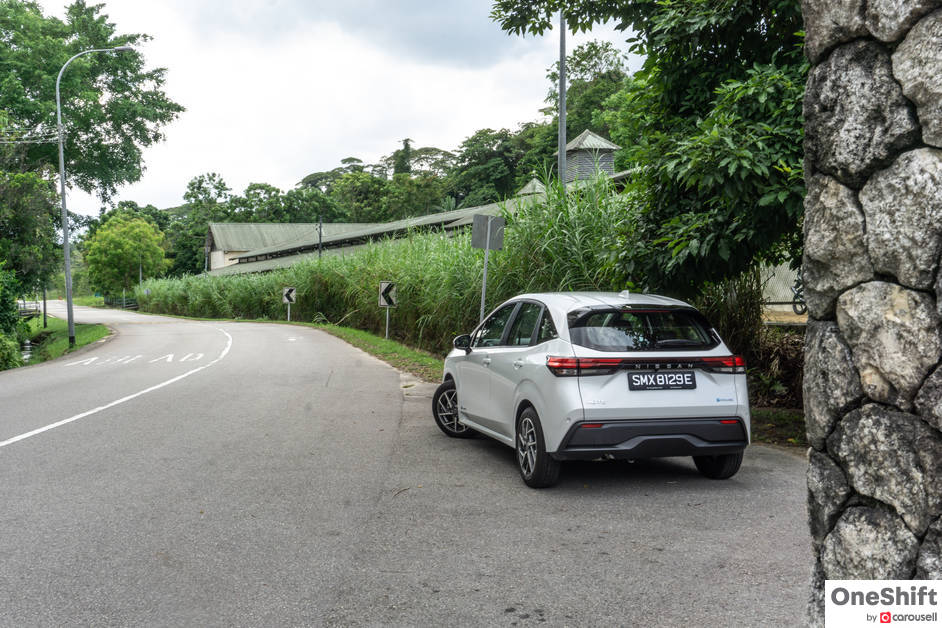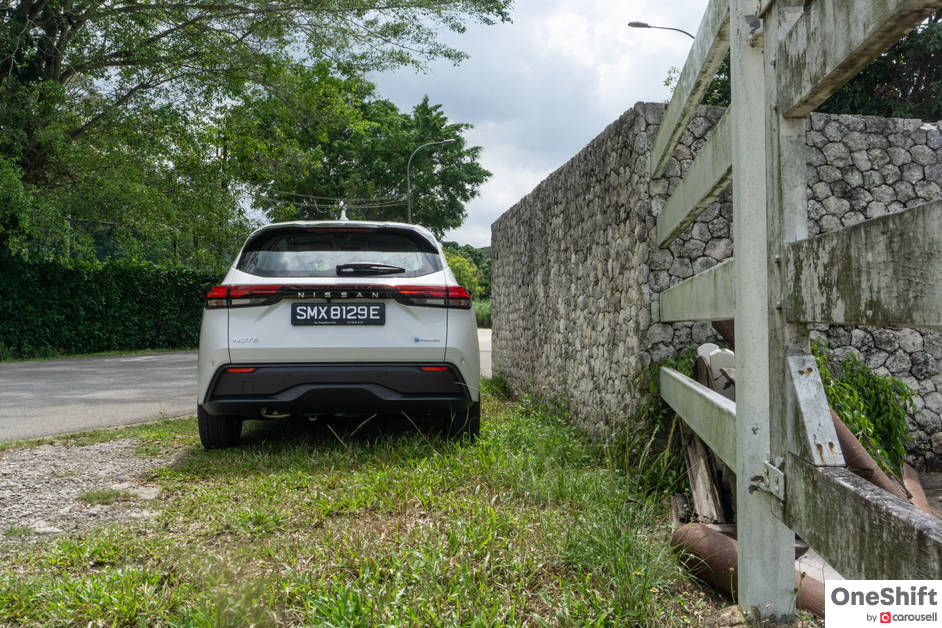Take Note Of This Belter
The Note e-Power is the only series hybrid in its segment, a unique and fresh proposition. It’s an important car for a transitory time like this, and arguably the one most suited to succeed.


By 2023, Nissan plans to sell 1 million electrified vehicles per year and e-POWER is key in achieving this number. While Nissan was one of the earliest to release a full electric vehicle (EV) in the form of the Leaf in 2010, uptake was not fast enough in comparison - in the Leaf’s 10th anniversary it sold only half a million cars since inception. e-POWER, being a cheaper, more accessible solution with no charging infrastructure worries, will likely form the bulk of electrified sales going forward. In Singapore, e-POWER cars already comprise almost 50% of Nissan’s sales numbers.

It’s an important car for a transitory time like this, and a significant one. Most hybrids offered in its class are what one would call ‘parallel’ - which means drive to the wheels is directly from the petrol engine, including all the oily bits just like in a normal car. The Note e-POWER however, is a ‘series’ hybrid - where the electric motor provides drive to the wheels just like in an EV, while an on-board petrol engine solely acts as a power generator. When you start to grasp this concept, you would realise e-POWER cars are indeed closer in concept to EVs than our commonly understood concept of hybrids.

Wonderfully, the Note e-POWER has none of the awkward designs that have plagued some past EVs. It is a handsome hatch that takes on Nissan’s fresh corporate logo and direction, and it works really well. LED headlamps with integrated projector lights, slim DRLs and continuous rear lamps all give off a sophisticated, futuristic vibe.

Although Nissan has made some nasty, low-rent interiors, things have really taken a turn for the better in the Note e-POWER. The basic architecture borrows some European flair (maybe it has something to do with the Renault connection?), giving off a hewn-from-stone impression. There is no lack of storage spaces, including one below the transmission tunnel that is elegant yet practical and large cup holders that can hold large water bottles.

There are still hard plastics, but crucial touch points have been taken care of in the Premium version we tested. Swathed in locally fitted high-quality nappa leather, the steering wheel, door cards and seats feel like they were from a much more expensive car - even if the stitching seemed suspect at places. Special mention should go to the Zero Gravity seats designed to replicate the NASA-approved ‘neutral posture’, which are truly comfortable.

Rear passengers would be happier in the Note e-POWER than in some modern hatchbacks, because there is no swoopy roofline here to eat into headroom. The squarish design of the doors makes entry and exit easy, and it is the same story with the sensibly sized boot too (340L). One strange omission is the lack of a rear parcel shelf.

Behind the thin-rimmed steering wheel is a combination of two screens that tell you everything from the petrol/electric power split to the active safety systems available. It is all very easy to operate and the software is definitely snappier and less buggy than the one in the Kicks. One major drawback is the touchscreen, which has regressed to a third-party system. The OS is slow and cumbersome to use, and oddly will stay on for 2 minutes even after the car is turned off.

The Note e-POWER is based on Nissan’s brand-new modular CMF-B platform, which is significant because it’s the first time e-POWER has been applied to it. Better still, the car benefits from having a 2nd generation e-POWER system that has 10% more torque and a new electric inverter that is 40% smaller and 30% lighter.

All the ducks are in a row for the Note e-POWER to succeed and it doesn’t disappoint. It accelerates eagerly just like an EV, achieving the century sprint in 9 seconds. But it is the instantaneous torque that’s more important, a huge confidence booster for overtaking racey Prius taxis. You will run rings around a Toyota Yaris Cross. Power always feels in abundance and you are only reminded of the penalty when the petrol engine starts up.

Thankfully, it is a thrummy 3-cylinder with not a disinteresting sound to it. Don’t try to predict when it will fire up, for it doesn’t respond directly to your right foot but more to the charging needs of the drivetrain. There is only a single gear so it can feel like a CVT sometimes, yet not really as there is none of the associated lag. To spare you some of the harshness, Nissan incorporated a world-first sound sensor that encourages the engine to switch on when ambient noise is palpable, so you will notice it less. How quirky and cool is that?

Actually, you might not mind the engine sound so much because it adds to the thrill of piloting the car through the corners. This is where the Note e-POWER truly shines, its chassis rarely being upset by anything the road throws at it. In fact, with a lower centre of gravity (CG), it is persistently resistant to understeer, so you tend to wring the drivetrain to the limits to fully exploit it. While you do, the light steering reacts precisely to your inputs, giving the car a turn of pace that will honestly shock someone who only ever seen a previous generation Note potter slowly to NTUC FairPrice.

One clue as to why the Note e-POWER drives like a sports car is the man who designed e-POWER, Naoki Nakada. A car lover and one of Nissan’s chief powertrain engineers, he also happens to be the one who developed the R35 GT-R. He said electric vehicles have to be ‘fun and exciting to drive’ if we want to create a carbon neutral society. Amen to that.

All that fun has to cost somewhere, and that is fuel consumption. Not that the Note e-POWER is a guzzler, but you cannot hope for it to be a sipper. It may even consume more fuel than a comparable petrol-driven car. However, the EV driving characteristics do make up for it, a lot. For the record, I achieved an average of 14.8 km/l over 219km of 70% urban and 30% highway driving. Nissan says the car is more efficient in urban settings than comparable hybrids. In real-world testing, I did not really find this to be true. Go figure.

One peculiar change from the 1st gen e-POWER system is that the car now creeps even when using ‘one pedal drive’, instead of coming to a stop on its own. Apparently, this has been put in place for safety reasons, but to me this has effectively eradicated the benefit of one pedal driving.

The Note e-POWER is an exceptional city hatchback. It is zippy, fun to drive, good to look at, fully loaded with standard features, practical and not very expensive. However, its relatively high fuel consumption will put off people who have efficiency high on their wishlist. If you love driving and revel in the fun of it though, the Note e-POWER is hard to beat indeed.

Credits: Text and Photos by James Wong








Get the Best Price for your used car
from 500+ dealers in 24 hours

- Convenient and Hassle-Free
- Consumer Protection
Transparent Process
With No Obligation








